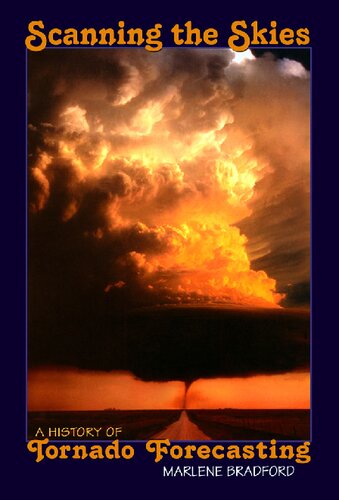

Most ebook files are in PDF format, so you can easily read them using various software such as Foxit Reader or directly on the Google Chrome browser.
Some ebook files are released by publishers in other formats such as .awz, .mobi, .epub, .fb2, etc. You may need to install specific software to read these formats on mobile/PC, such as Calibre.
Please read the tutorial at this link: https://ebookbell.com/faq
We offer FREE conversion to the popular formats you request; however, this may take some time. Therefore, right after payment, please email us, and we will try to provide the service as quickly as possible.
For some exceptional file formats or broken links (if any), please refrain from opening any disputes. Instead, email us first, and we will try to assist within a maximum of 6 hours.
EbookBell Team

4.4
72 reviewsTornadoes, nature’s most violent and unpredictable storms, descend from the clouds nearly one thousand times yearly and have claimed eighteen thousand American lives since 1880. However, the U.S. Weather Bureau--fearing public panic and believing tornadoes were too fleeting for meteorologists to predict--forbade the use of the word "tornado" in forecasts until 1938.
Scanning the Skies traces the history of today’s tornado warning system, a unique program that integrates federal, state, and local governments, privately controlled broadcast media, and individuals. Bradford examines the ways in which the tornado warning system has grown from meager beginnings into a program that protects millions of Americans each year. Although no tornado forecasting program existed before WWII, the needs of the military prompted the development of a severe weather warning system in tornado prone areas. Bradford traces the post-war creation of the Air Force centralized tornado forecasting program and its civilian counterpart at the Weather Bureau. Improvements in communication, especially the increasing popularity of television, allowed the Bureau to expand its warning system further.
This book highlights the modern tornado watch system and explains how advancements during the latter half of the twentieth-century--such as computerized data collection and processing systems, Doppler radar, state-of-the-art television weather centers, and an extensive public education program--have resulted in the drastic reduction of tornado fatalities.